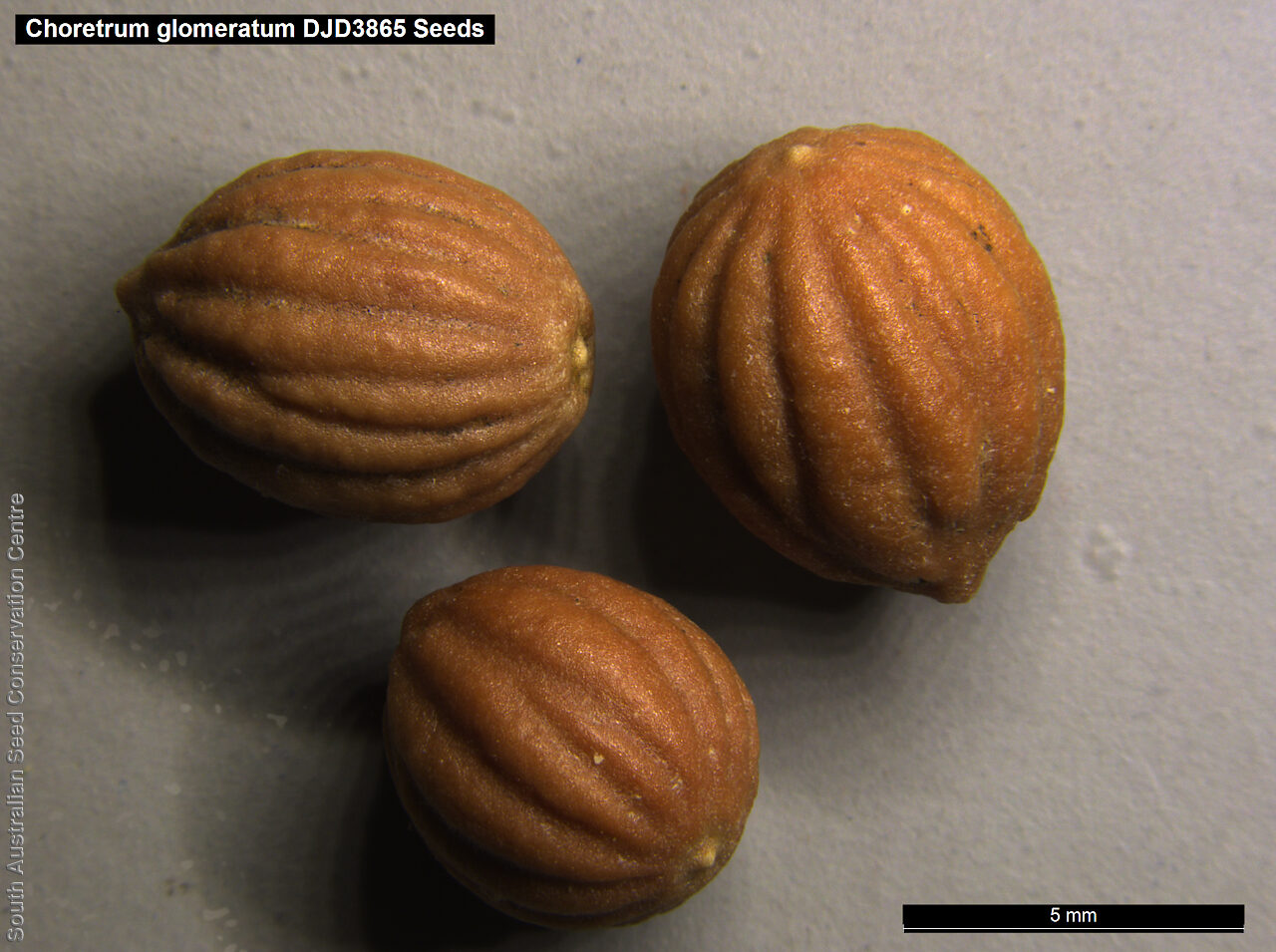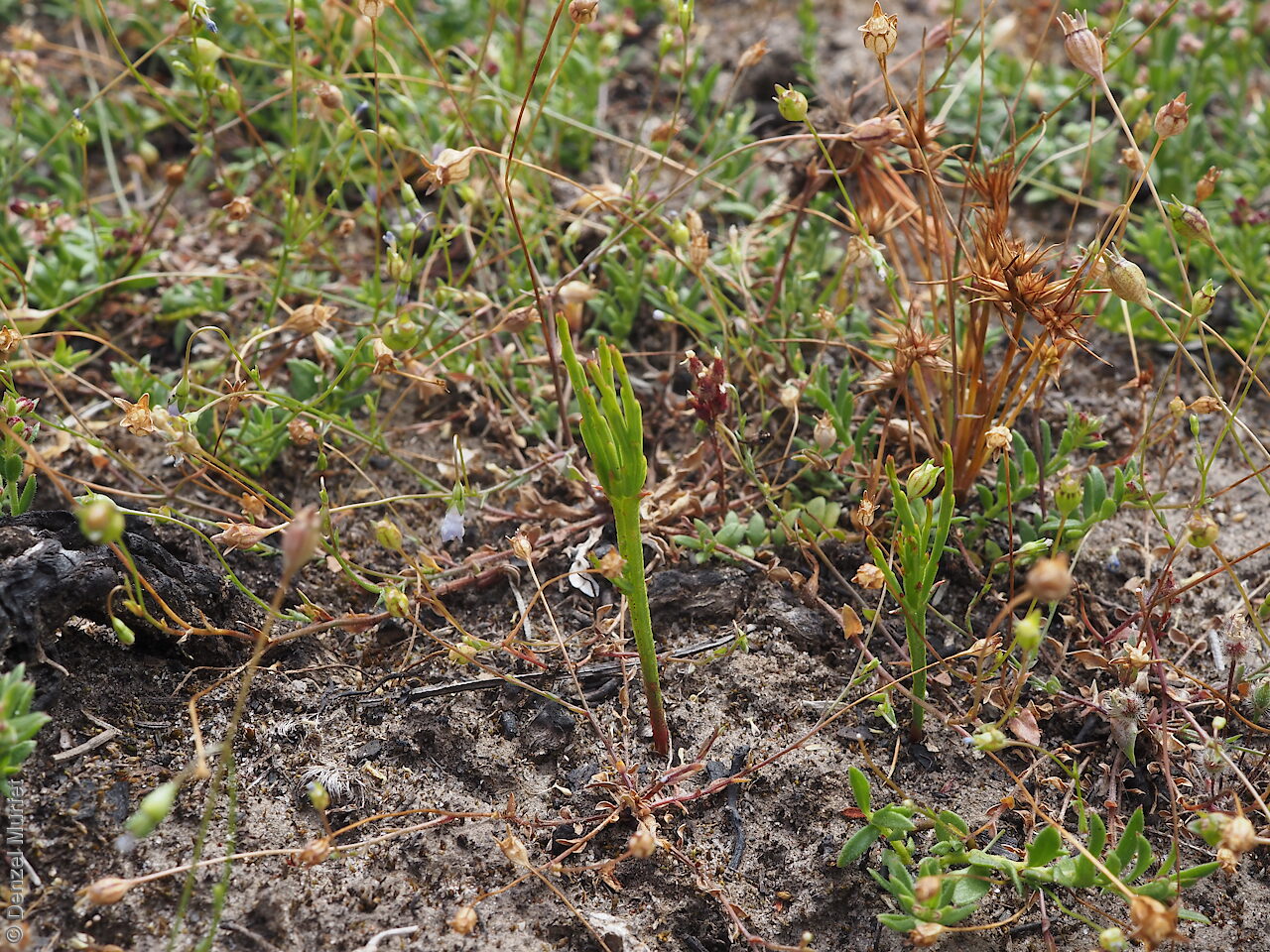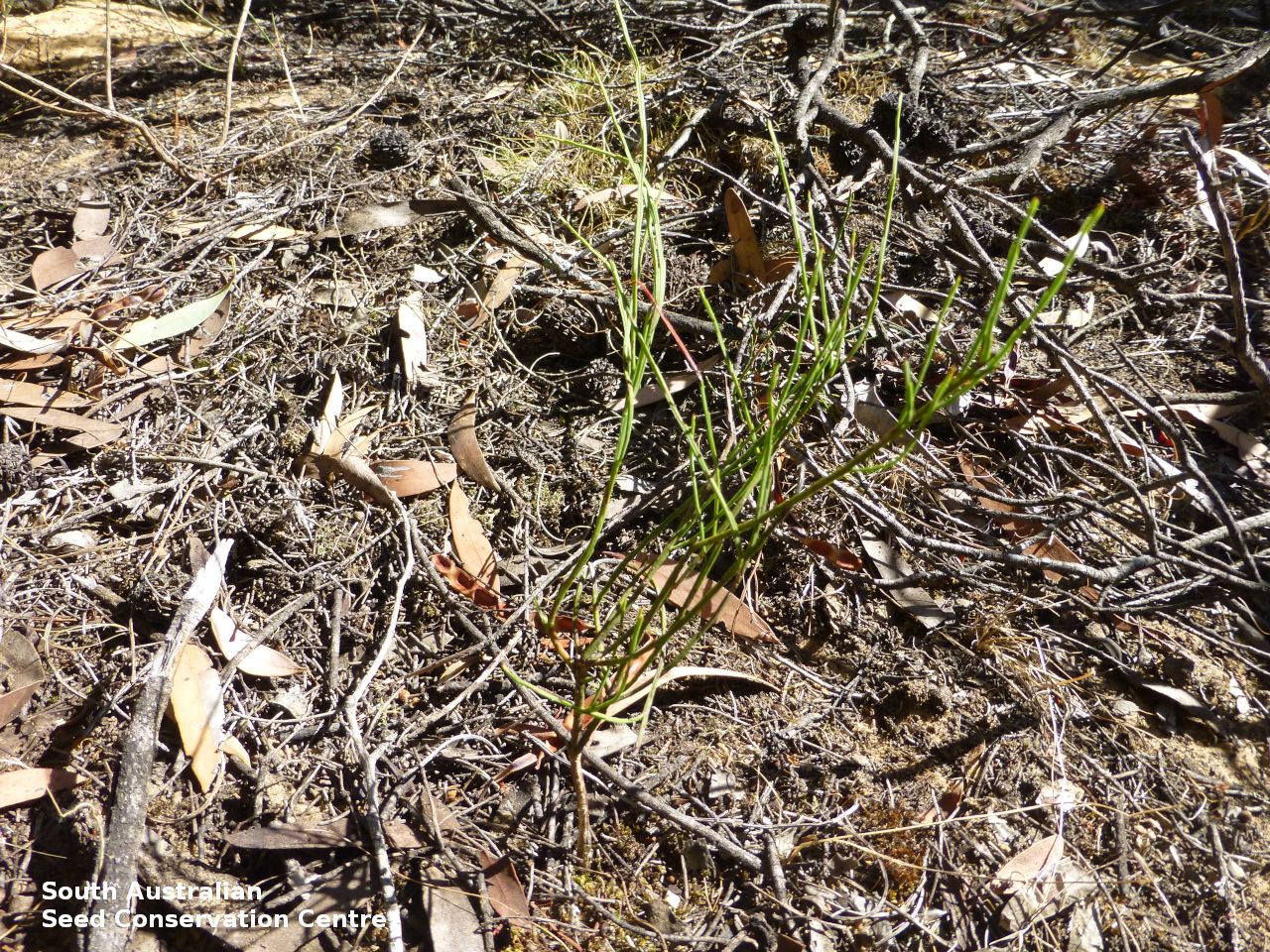






















Botanical art
Prior names
Choretrum glomeratum var. glomeratum
Common names
Common Sour-bush
White Sour-bush
Etymology
Choretrum from the Greek 'choris' meaning separate and 'etron' meaning abdomen, referring to a rim that separates the top of the flower stalk from the flower itself. Glomeratum from the Latin 'glomeratus' meaning to gather into a ball.
Distribution and status
Found in southern South Australia from the west coast of Eyre Peninsula to the upper South-east growing semi-parasitically in woodland and mallee communities on sandy red soils. Also found Western Australia, New South Wales and Victoria. Native. Uncommon in South Australia. Uncommon in the other States.
Herbarium regions: Eyre Peninsula, Murray, Yorke Peninsula, Kangaroo Island, South Eastern
NRM regions: Eyre Peninsula, Kangaroo Island, Northern and Yorke, South Australian Murray-Darling Basin, South East
AVH map: SA distribution map (external link)
Plant description
An erect or straggly semi-parastic perennial, yellow-green shrub to 2 m high. Leaves subulate to 1 mm long; appressed to slightly spreading, caducous. Inflorescence a raceme to 5 mm long bearing 2-5 small flowers but only one fruit. Flowers enclosed by 3 brown or white bracts, perianth white 1-1.5cm long. Flowering throughout the year. Fruits are pale green ellipsoid to globular freshy drupes to 5 mm long. Seeds are hard brown spherical seeds to 5mm, with ridges running from end to end. Seed embryo type is linear underdeveloped.
Seed collection and propagation
Collect seeds between September and January. Collect drupes that are maturing; the skin softens as it ripens. Either collect the drupes from the bush or easier to collect ripe fruits that have fallen off the plant onto the ground beneath the bushes. Place the drupes in a bucket of water and rub the flesh off with your hands. Drain the water and wash again if required to remove all the flesh. Then spread the wet seeds on paper towel and leave to dry. Store the seeds with a desiccant such as dried silica beads or dry rice, in an air tight container in a cool and dry place. Seed viability can be average. This species is generally difficult to germinate, it has morphophysiological dormancy and complex germination requirements.
| Location | No. of seeds (weight grams) | Number of plants | Date collected | Collection number Collection location | Date stored | % Viability | Storage temperature |
|---|---|---|---|---|---|---|---|
| BGA MSB | 2,300 (110.1 g) 1,400 (43.6 g) | 100+ | 24-Sep-2005 | DJD145 Southern Lofty | 8-Aug-2006 | 100% | -18°C |
Number of plants: This is the number of plants from which the seeds were collected.
Collection location: The Herbarium of South Australia's region name.
% Viability: Percentage of filled healthy seeds determined by a cut test or x-ray.